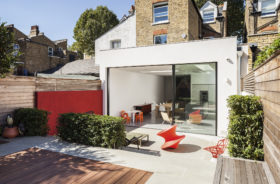
21st-22nd February 2026 - time to get your dream home started!
BOOK HERE
21st-22nd February 2026 - time to get your dream home started!
BOOK HEREWhen undertaking a self build, it makes good sense to get to know the basics of planning regulations, including your council’s Local Plan.
This policy document is prepared by district and borough councils throughout England and considers the specifics of the local area, whatever they may be. Scotland, Wales and Northern Ireland have their own equivalent – Local Development Plans for the former two and Development Plans for the latter.
Local Plans work in conjunction with government guidance contained in the National Planning Policy Framework (NPPF) to form the basis of decisions on planning applications.
Furthermore, some councils have additional or supplementary policy guidance that fleshes out various aspects of the Local Plan. It’s a complex system, but something that is certainly worth getting to grips with.
Knowledge of the policies and proposals specific to the location in which you wish to build will prove invaluable when you’re plot hunting and assessing planning potential.
Local Plans take several years to prepare before they are formally ratified. They have to go through a lengthy process that begins with a public consultation and concludes with an assessment by a government-appointed independent inspector.
The policies contained within the document should be in line with the government’s principles, so if these are updated while the plan is being prepared, then it must be changed to reflect the modifications. This means that additional consultations will need to be undertaken prior to implementation. As a result, it can be a long and drawn-out process.
Read more: Contemporary timber frame home in a conservation area
You can access your council’s Local Plan via its website; it should be located in the planning policy section. Always check whether it is up-to-date and adopted, which can be tricky if it is under review. It can also be a good idea to call the council’s planning policy team to ensure you’re looking at the most current version.
Most Local Plans comprise a single document, but some councils divide it into two. If this is the case, it will be split into a core strategy and a site allocations and development plan. The former deals with the general thrust of the council’s policies and overall strategy, the latter with larger scale developments and detailed policies that are relevant
to determining applications.
The layout and chapter titles of Local Plans will vary from council to council – however, there are a number of common themes. All of the documents will lay out the policies alongside an explanatory commentary, as well as featuring maps to show the specific areas where the various rules apply.
The maps can be quite detailed for individual settlements; some will show special designations, and others the precise location of the development boundary.
For self builders, the key aspects of a Local Plan are:
Read more: How to get planning permission in a conservation area
If aspects of a Local Plan need more detail, it may be extended through supplementary guidance. This can cover any aspect of development, but will typically focus on design recommendations.This advice shouldn’t be rigidly applied as it is not policy, although councils may well be inclined to treat it as such.
Neighbourhood Plans often sit alongside Local Plans, and have more specific policies regarding development in particular settlements or areas. These have to go through a consultation process, too, which culminates in a local referendum.
The guidance doesn’t carry full weight until it is formally adopted, much like with Local Plans.
Planning decisions should be made following the policies of the overall development plan, which combines the Local Plan and the Neighbourhood Plan (if there is one), unless so-called material considerations indicate otherwise.
Government guidance and local supplementary guidance are both material considerations, but a whole range of other factors can be, too. These include relevant appeal and court decisions that shape how policies are interpreted, and can also comprise alternative options for the site, known as fall-back.
This might be an earlier planning permission, or the potential to use permitted development rights to do something similar, or perhaps less desirable in some way, compared to your proposed scheme.
In fact, pretty much anything is capable of being a material consideration, although personal circumstances, applicants’ motives, private rights of way, legal issues and covenants, as well as disruption during construction, are generally ruled out.
All of the different elements we have highlighted so far mean that it’s almost impossible to know which plan or piece of policy takes precedence – the system is exploited by councils and developers to cherry pick the bits most favourable to their case.
The important distinction to make when looking at policies is between those that would affect the principle of whether you can build, and those that influence what you will actually be able to gain consent for.
Quick Guide: Government GuidanceGovernment policy guidance in England is contained in the National Planning Policy Framework (NPPF), which is fleshed out by Planning Policy Guidance (PPG). The equivalent in Scotland is the National Planning Framework, Scottish Planning Policy and Planning Advice Notes; in Wales, Planning Policy Wales and Technical Advice Notes; and in Northern Ireland, the Strategic Planning Policy Statement and Development Control Advice Notes. The NPPF is relatively concise, as these things go, and it’s worth a read of any sections relevant to your project, like design, housing, or development in the countryside. |
Showing that your new house complies with all the policies relating to design, layout, preservation objectives and so on won’t get you over the fundamental problem of principle – such as being located in countryside or green belt where new development generally isn’t allowed.
Similarly, just because a new house in a particular location might be acceptable in principle, it doesn’t follow that just any type of building would be admissible there.
In practice, unless you’re going to design your home yourself, you’re likely to be employing an architect or designer who should have a fairly good idea of what policy constraints apply. It is also sensible to take pre-application advice from the council.
This is helpful not just in terms of gauging their reaction to your preliminary ideas, but also to identify precisely which policies the council considers most relevant to your scheme.
This will enable you to shape your project to ensure that when you do submit a formal application, you can demonstrate it complies with policy, which in turn should smooth the ride towards planning permission.
Top image: Getting to know your Local Plan could help you identify land that your council has earmarked for development or that’s within settlement boundaries

